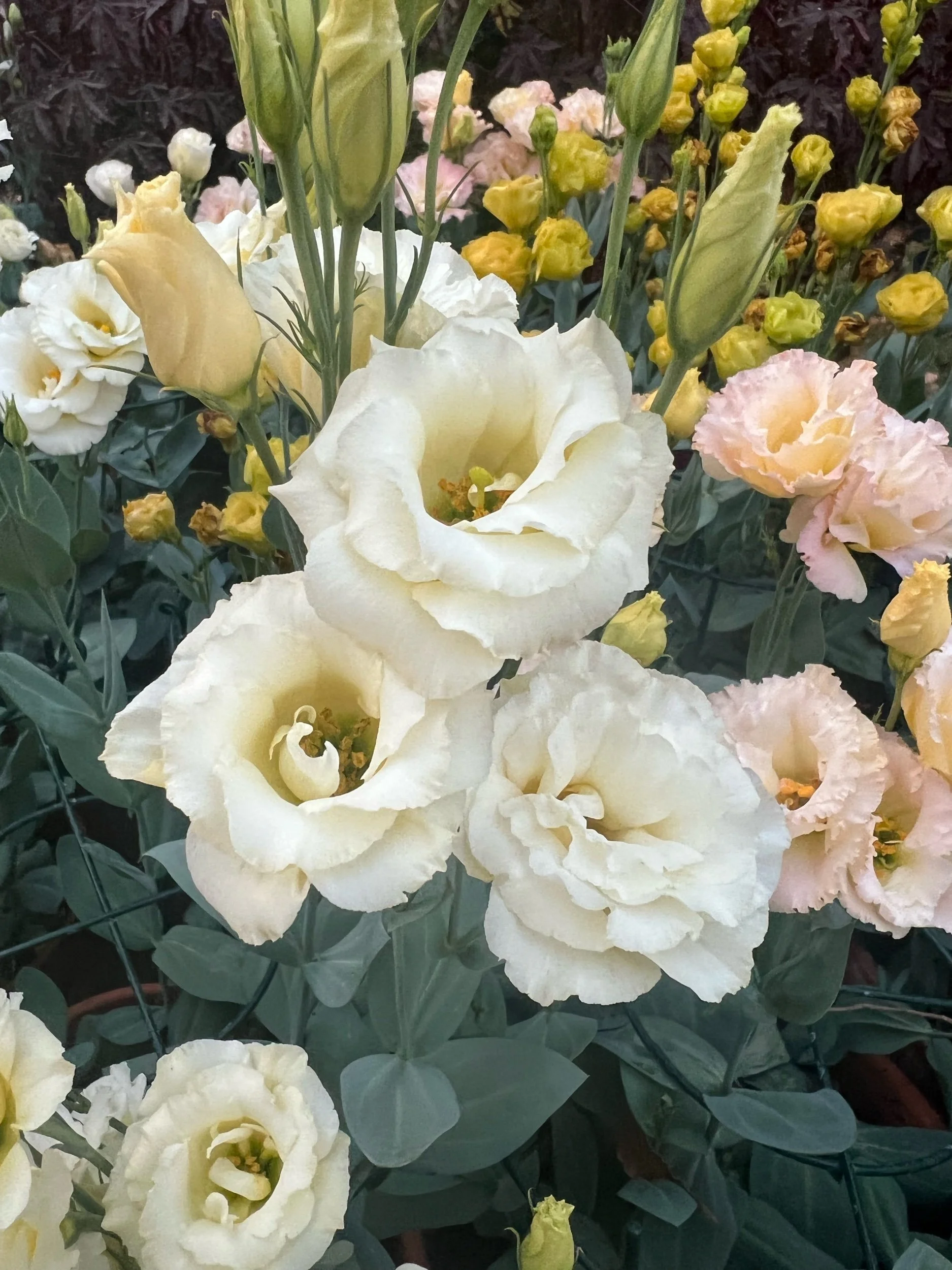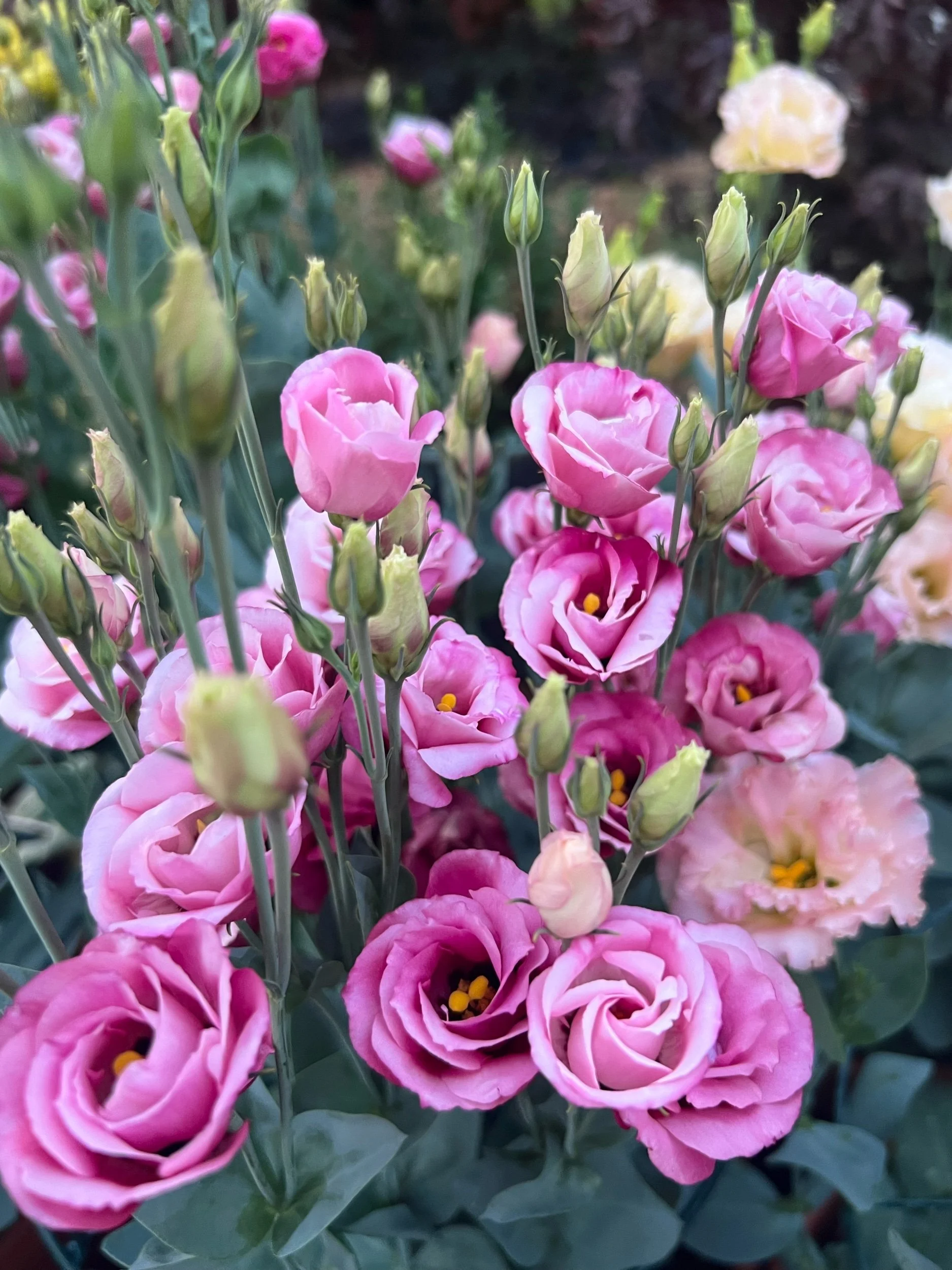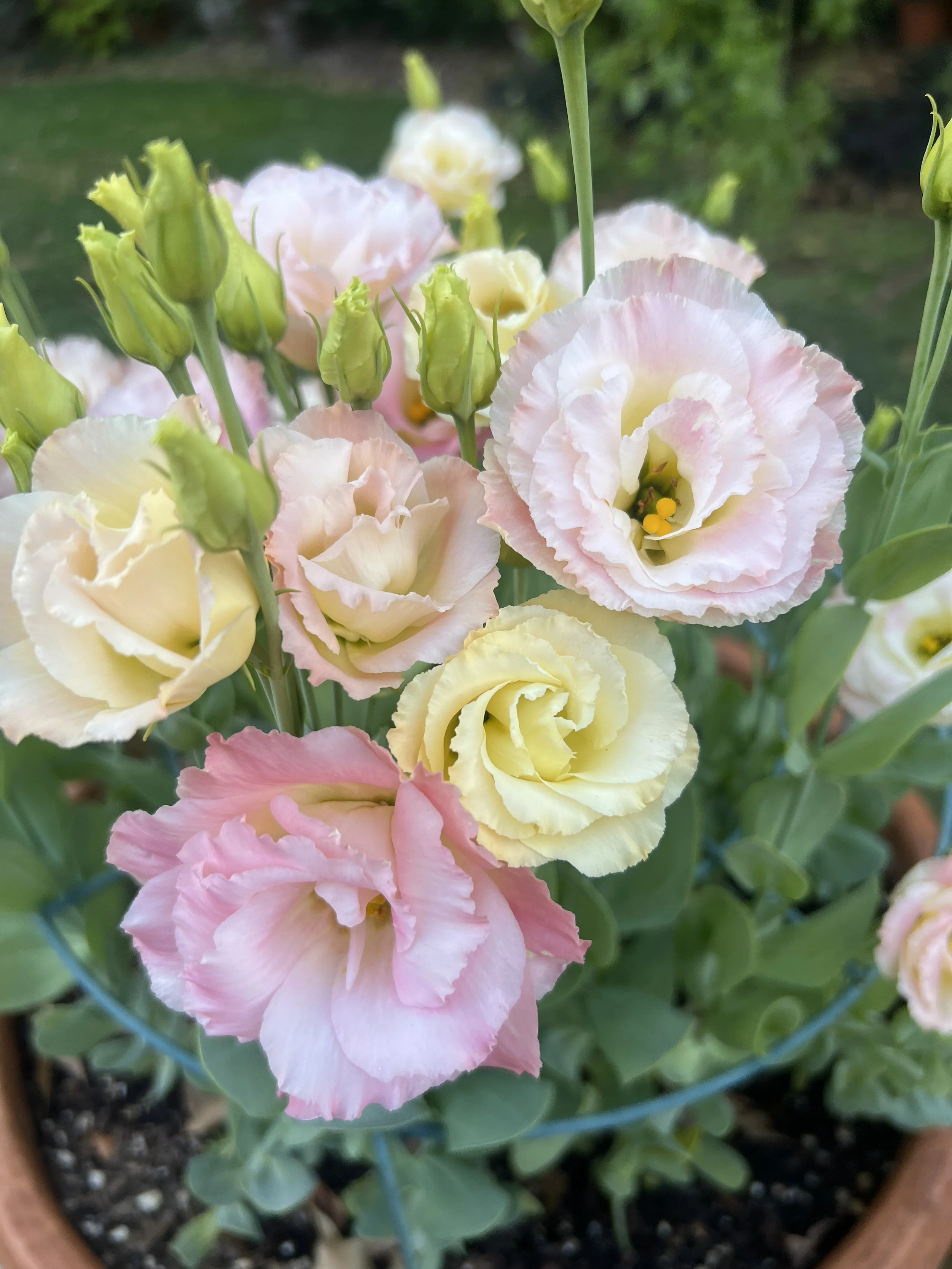Lisianthus
Overview:
Lisianthus are one of Phoenix best kept secretes! These flowers take the heat, and will actually last a few year with proper care.
Adventure Level
2/5
Starting seeds:
I do not recommend starting these seeds indoors. But if you are feeling adventurous, start them inside under grow light sometime in between Thanksgiving and Christmas. The are slow to start and usually have a 50-60% germination rate. surface sow two seeds per cell and lightly top with fine vermiculite. These seeds are prone to dampening off so make sure that they get good air flow post-germination.
When to plant outdoors:
You can plant lisianthus any time of the year, but I recommend either planting in the fall or the spring. Fall planted lisianthus will bloom the following summer. Spring-planted lisianthus will bloom that same summer. Lisianthus like to get established when soil temperatures are still below 70 degrees, so don’t wait for to long to plant them in the spring. If you plant too late, do not fear, they may not bloom that year, but will the following year.
Pinching:
Pinch the enter growth of the plant when it starts to elongate. This will allow the plant to send up side shoots so you can get 3-5 bloom stalks per plant. I usually pinch my plants 1-4 weeks after planting depending on the plug.
Spacing:
3-4” apart
Sun:
Full sun, 6 or more hours per day.
Water:
Lisianthus like consistent moisture. Make sure they dry out between watering to avoid root rot. When watering try not to get the foliage wet. Containers are watered 2x per day during the hottest months in Phoenix. In-ground they are watered every day.
Flower Support:
I would advise using support if you intend to use these for cut flowers. In containers and small garden spaces, Peony cages are my favorite support method. If growing in beds, you can use Hortnova netting.
Fertilizing:
Lisianthus are heavy feeders, feed them consistently with a weekly liquid fertilizer. In the summer we are watering plants a lot more and nutrients get leached out of the soil more quickly. This means that we need to be applying fertilizer on a more consistent basis to make for the constant leaching. Some of my favorite liquid fertilizers are Maxsea and Neptunes Harvest.
Succession plant?
I do not typically plant many successions. I like to plant all my lisianthus in March and April.
Post-summer care:
After the summer the plants can be cut back and left alone. Trim back any dead or diseased stems and keep on keeping an eye on it throughout the winter. Make sure that they aren’t getting too much water during this time as they can be susceptible to rot. Once you see new growth emerging in late February / early March, give it a good feeding and wait for them to green up.
Favorite Varieties:
























